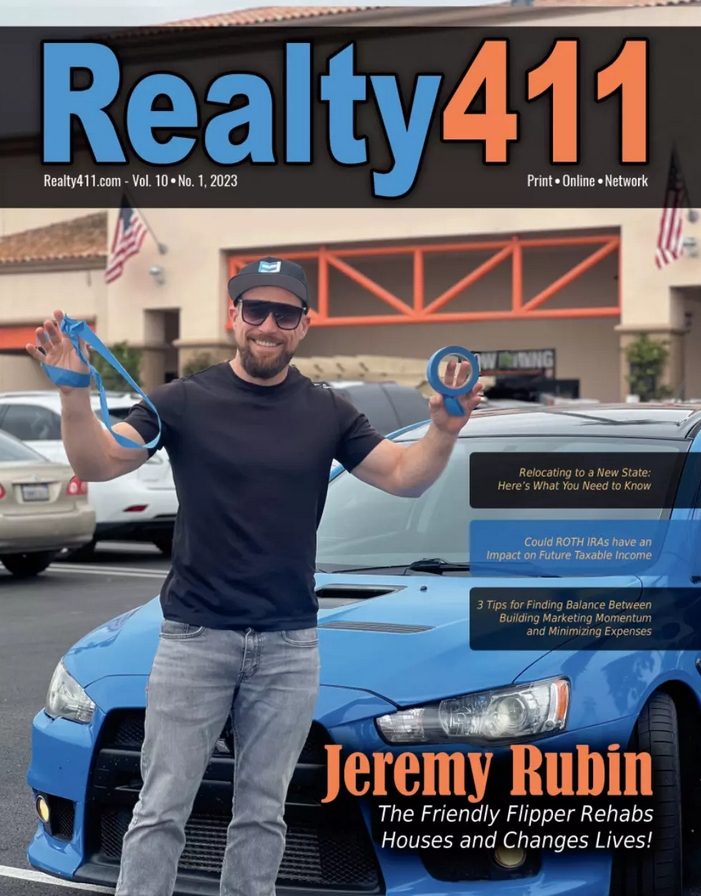|
Getting your Trinity Audio player ready...
|

Time is a precious, limited, and non-renewable resource; once it is gone or wasted, it is gone forever
Summary:
Choosing to allocate our time more effectively is a conscious decision. We all have moments of misallocation, such as spending too much time in unproductive Zoom meetings or getting sidetracked by non-urgent tasks like organizing your desk or checking social media. However, the key to mastering time is prioritizing our daily activities. This not only ensures we are always in control and organized but also reduces the feeling of being overwhelmed by multiple tasks, giving us a profound sense of calm and control over our lives.
Effective time management applies almost universally, whether we organize our daily tasks, manage family activities, plan social events, prepare for special occasions, shop for a date or a spouse, or engage in a money-making endeavor.
Time is a precious, limited, and non-renewable resource; once it is gone or wasted, it is gone forever. Resources are designed to magnify the value of time through others or technology, including hardware and software programs. There are more brilliant programs than anyone could ever dream possible. But the same applies to training.
article continues after advertisement
Article:
As someone who writes down daily tasks to accomplish, I’ve found the spiral binder method to be highly effective. I use three 5×8 spiral-bound notebooks from Staples. The yellow one is for ‘things to do today. ‘ At the end of the day, I tear out the sheet and advance to the next day, writing down things not accomplished that day. The green notebook is for anything related to money, such as summarizing potential transactions or consulting jobs, which serves as a fresh reminder. When the data is transferred to my computer, that page is torn out and discarded. The Red binder is for technical data reminders that I am trying to learn, as well as jobs that I need to keep for long-term references. This efficient method, combined with using Siri to text the status of transactions and jobs on my Apple iPhone, has helped me stay fully organized and follow up on all my tasks by 8:30 am each day. It serves to clear my mind, as I am accustomed to multitasking to the max, leaving my day free to pursue my overall objectives.
Planning the use of time and prioritizing the relative importance of each daily activity has been a practice for thousands of years. Organizing daily actions and choices, whether personal planning or technology-driven, allows us to accomplish more. More importantly, it empowers us to control our time and resources, instilling a profound sense of capability and empowerment and making us feel more in charge of our lives.

A platform for change:
For a loan agent, a written plan is not just a suggestion; it’s a necessity. It should contain a daily list of activities to accomplish, prioritizing their importance, along with a schedule to achieve each personal and professional goal. This pre-planned written daily action plan, combined with an outbound call, email, and text system, and a weekly activity schedule, can lead to a profound sense of accomplishment and satisfaction. For me, the yellow, green, and red spiral binder method works great.
The loan and real estate agents and other salespersons’ jobs are characterized by multi-tasking:
- Identifying a qualified lead.
- Pursuing the possibility of getting an appointment.
- Making the presentation.
- Could you explain the benefits?
- Answering questions.
- Handling the objections.
- Asking for the order (closing)
- Could you close the transaction?
- Repeating 2 through 6 again.
Always have 10 to 20, or more, active leads at a time. Some will succeed, while others will fail and fade away. But that is the nature of sales. This constant focus on maintaining active leads keeps us ever-present and out there, with all our energy, focus, and determined pursuit.
Motivation to produce numerous closed loan transactions to satisfy customers, employers, and oneself is necessary to earn commissions and sustain a decent standard of living for one’s family.

I have some suggestions for creating an action plan.
- Have I defined my universe of possibilities? That number is the total number of potential leads interested in my products, goods, or services at some point. Have I included my relationships with their extensive networks of other professionals for possible referrals in my defined universe of possibilities? Leveraging these relationships can make you feel more connected and supported.
- How many prospects can I manage to contact daily and weekly?
- How often do you think I should follow up with prospects? Is the answer 30, 60, 90, or more days?
- Do I have a written script for verbal conversations and email marketing? (The language script may be formal or informal based on your product, personality, and past relationship with the person).
- Asking questions and allowing people to share their thoughts, feelings, and experiences go a long way toward establishing a lasting relationship. The answers also help build a history.
- Do I have a formalized written marketing plan? This plan can provide a clear roadmap for your marketing activities, ensuring a systematic approach and helping you achieve your sales targets. A well-structured marketing plan can help you identify your target audience, set clear objectives, and choose the most effective marketing strategies to reach your goals.
- What action habits should be expected daily, weekly, and monthly? For instance, daily habits include reviewing active leads, weekly habits involve setting new goals, and monthly habits focus on evaluating overall performance.
- Do I start organizing my day each morning by reviewing my active leads and focusing on transactions that are nearing completion? Am I prioritizing the follow-up of my daily active leads? These are the highest-quality leads that should be a priority in your daily actions, as they are more likely to result in successful transactions. Active leads are potential customers who have demonstrated a genuine interest in your product or service, making them more likely to convert into a sale. Identifying and focusing on these leads is essential to maximizing your time and resources.
- Will I practice great tenacity in the daily follow-ups of active leads? This concept is critical in sales and can significantly increase the chances of successful transactions.
- Am I ever fully present and engaged with all I have, including energy, focus, and a determined pursuit? Am I putting forth my best efforts?
- My responsibility is to assist customers in making informed decisions that meet their financial needs and objectives.
- Professionally, completing transactions is our responsibility. Fiduciary duty is ever-present.
- How many (real estate, loans, or other completed tasks) are goals to be accomplished or closed transactions monthly?
- A clearly defined and quantified amount of gross revenue anticipated to be gained over a specified period, such as a month or a quarter, could prove extremely helpful. Am I working effectively with coworkers, superiors, subordinates, and independent contractor vendors, maintaining mutual respect and dignity while ensuring a clear understanding of objectives to facilitate the closure of transactions?
- Mutual respect in professional relationships is not only crucial but also a cornerstone that fosters a positive work environment and encourages open communication, ultimately leading to more successful transactions and making us feel more valued and respected in our professional circles.
- Do I have the best office technology, phone technology, email marketing systems, customer relations management system (CRM), network marketing, and industry-specific software to do the most professional job?
- Do the people around me, including support staff and other like-minded individuals, share my values regarding business, loyalty, relationships, and customer follow-up?
- In a professional context, kindred values include honesty, integrity, and a strong work ethic. Surrounding yourself with people who share these values fosters a positive work environment and encourages open communication, leading to more successful transactions.
- Do I associate with other people who share kindred values and also strive for success, self-motivation, and tenacity?
A suggested action-filled daily work schedule.

Start time: 7 am to 4:00 pm- Monday through Friday. Begin organizing your day and reviewing the tasks that need to be accomplished. Text the status of your transactions and wait for feedback.
Maximum performance may require additional hours, some evenings, and weekends. Prolonged physical and mental effort requires breaks for physical and psychological sustainability. One should also take occasional breaks away from everyday stresses. Daily walks in the sunshine will work wonders for energy, focus, and stamina. Walk a dog and pick up his stuff or call a friend while frolicking in the forest.
Many people believe that there is a direct correspondence between the effort invested and the results achieved. They think that input and output correspond, but they don’t.
Many people commonly assume that they can expect similar results from each hour of active work. Suppose you are an hourly wage earner at a fast-food establishment. That’s how it works- but technology has changed that. But that is not how success works in most profit-making enterprises.
Input and output rarely correspond. Input results can be leveraged with knowledge and proper technical tools to achieve geometrically greater output and production. Could you identify those tools?
Wow, this worked; I bet I can do even better.
We cannot motivate individuals to achieve their goals. They must develop and internalize their desire and motivation. Sometimes, learning to improve becomes a passion through repeated modification and redirection. Repeated successes always bring confidence.
Thousands of brilliant individuals could achieve more if they were both motivated and changed their use of time and daily action habits.
The success of one’s action plan varies depending on one’s circumstances and stated goals. The preacher, teacher, psychologist, company manager, supervisor, clerk, bookkeeper, accountant, a prisoner in a confined environment, or salesperson relying on commissions have different success priorities. What is most valuable in a time segment for these folks will differ. Each person should construct a platform and assess the importance, time spent, and results received for each minute.
article continues after advertisement
Historical references in explaining the concept of focusing on the essential items in time utilization:
Economists and philosophers have written about the concept known as the 80/20 rule for centuries.
Jean-Baptiste Say (1767-1832) was a French economist who first coined the term “entrepreneur.”
The entrepreneur reallocates economic resources from lower-productivity areas to higher-productivity areas with greater yields.
In 1896, Vilfredo Pareto, an Italian economist and sociologist, developed the concept of the 80/20 rule. It is now known as the Pareto Principle.
In any series of elements to be controlled, a selected small fraction of the number of elements always accounts for a large fraction in terms of effect. Thus, the Pareto Principle was born.
In 1949, George Zipf, a Philosophy professor at Harvard University, stated:
The input of resources (people, goods, time, and skills) tends to be allocated in a way that a small portion of resources (20% to 30%) accounts for a larger corresponding output (70% to 80%) of results.
In 1951, Joseph Moses Juran, a management consultant and significant contributor to the quality control revolution, wrote the Quality Control Handbook. He renamed the Pareto Principle,
Rule of the Vital Few and the Rule of the Trivial Many.
In 1957, C. Northcote Parkinson wrote two books: Parkinson’s Law and The Law and the Profits. His first law was:
Work will expand to fill the time available for its completion.
His message concerns the time wasted and the expansion of unnecessary bureaucracies in business organizations and governments. When people and institutions spend other people’s money, there is a natural incentive to be inefficient and expand the time or completion. Consuming assets rather than getting results is generally their motive.
An official wants to multiply subordinates, not rivals. Officials do work for each other. The number of employees is expected to expand by 5-7% per year, regardless of any variations in the workload.

To sum up, people have the option to allocate their daily activities more effectively. 80% of our activities produce only 20% of the intended results.
- 20% of salespeople produce 80% of the income.
- Conversely, 80% of salespeople make 20% of the available income.
Most individuals, companies, and bureaucracies allocate 80% of the available resources to the least effective 20% of activities. Bureaucracies, such as the government, are not motivated by performance or results but by consuming assets, so next year’s budget is equal to or greater than this year’s. They strive for more funding and subordinates, regardless of how trivial the jobs may be. Make-work jobs, or otherwise, constantly grow because they hold a monopoly on power and authority. They are not required to compete in an open market.
- 20% of companies and 20% of salespeople control 80% of the market share.
- Conversely, 80% of companies and 80% of salespeople hold 20% of the market share.
- 80% of the profits in your organization will result from 20% of your customer base.
- 20% of the profits in your organization will result from 80% of your customer base.
Satisfaction and dissatisfaction are consistent with the 80%-20 % rule.
- Eighty percent of our satisfaction will come from twenty percent of our relationships, both in business and personal.
- Eighty percent of our dissatisfaction stems from 20% of our relationships, both in business and personal life.
Superficial relationships and unwanted opinions from people who do not matter:
Mutual respect and dignity are essential components for sustaining long-term relationships. That includes respecting the time value of others.

I appreciate critical opinions from people who have no vested interest and are not personally invested. They believe that they are innately intelligent and informed! In their minds, they must be the source of all knowledge and wisdom for earthly beings because they watch mainstream news nightly. Therefore, they are superior to those around them. Follow the science is a catch-all. Their opinions are generally formed without forethought or consideration for the views of others. No other opinions matter: they are the messiahs, the anointed ones who possess it all. Self-righteousness is their claim to moral superiority.
Expressing opinions about the actions and accomplishments of others is a waste of time and energy when they did not specifically ask for it. Your opinions should be kept to yourself and redirected into energies that focus on how you can increase your income.
Acquaintances who do not share our positive attitude about life and our value system are often negative influences and should be considered ex-friends. The same goes for online (superficial friends) parasites we have never met but always express their unintelligent, emotional, and irrelevant opinions. These parasites tend to express their ideological views and attempt to sway others to their way of thinking, which is always a 100% waste of time. Of course, their knowledge is science-based, spoon-fed information, according to the propaganda machine on mainstream media news, ABC, CBS, CNN, MSNBC, BBC, and FOX. The same applies to obnoxious and opinionated coworkers and employees. Does anyone care about their superficial opinions outside their self-subscribed microcosm? Who cares? Not Me! It’s tiring to deal with stupidity.
Conversations may be of interactive interest to the participants, such as a friend engaging in a conversation with another. Conversations and time may be spent on meeting company objectives, developing new business, improving systems, increasing cash flow, and advancing stated goals. Unallocated time should be saved for family, friends, and time off.
Eliminating cluttered relationships from both your personal and professional spheres will bring tranquility, dignity, and positive results.
Here is a suggested time-value schedule of daily activities, with variable importance assigned to each activity.

Leveraging your time will create more free time. You can eliminate, consolidate, or delegate a portion of your daily activities. You can leverage your time, talents, and skills through others, such as associates, employees, or independent contractors.
A, B, C, D, and Time Off are subsets of the time management systems.
Time effectiveness may vary depending on your motivation, regimen, objectives, tenacity, and the use of strategic leverage. Leverage comes from delegating to others.
“A Time” Time is the most valuable resource we spend.
The key is spending time in face-to-face or one-on-one communication with your target buyer or seller. The contact may be in person, by phone, or by email but must expressly reflect a request that the party or prospective buyer/seller work with you or buy your products, goods, or services. I suggest that average salespersons do not apply 10% of their workday in an A Time mode. They should spend more than 60% to 80% of their available time in an A-Time mode.
B-Time is the time spent preparing (preparation time) to move into A Time.

A phone call, letter, or email request is likely involved. B Time may constitute 30%-40% of one’s daily schedule. Push your time into A and delegate to another, B to 20%.
Examples:
- Could you draft a letter, email, text, or phone call to request a Zoom or face-to-face meeting with the prospect? A time does not start until the client is in front of you or directly on the phone.
- Once you consummate the transaction, all other follow-up activities to drive the process forward fall under C Time.
C- Time is a catch-all administrative activity:
- C-Time does have value in driving your business forward. It most likely consumes 50% to 80% of our workday. The key is to delegate C-Time to support staff employees or independent contractors to optimize the use of your time.
Examples:
- Record keeping and regulatory compliance activities are C Time.
- I develop and maintain marketing systems and materials, including database management and web-based lead generation.
- Office organization and administrative duties activities are C-Time.
- Interactions with staff and co-workers.
- Interface with third-party vendors such as escrow, title, appraisal, environmental engineers, and property-related insurance companies.
- All general activities required to maintain your business enterprise but not directly related to closing a transaction are C-Time.
- Industry educational events.
D-Time is the catch-all term for activities that produce no results and have little value; in other words, it is wasted time.
These activities may consume a large portion of our day. D Time differs from time off or away from your business or money-making activities.

Examples:
- Read the news and have conversations with friends and family. Some may argue that discussions with friends and family are not a waste of time. )
- Maintain social media such as LinkedIn, Facebook, Snapchat, and Twitter.
- Engage in casual conversations with employees and staff who are not directly related to business matters.
- Industry meet-and-greets often involve cocktails with colleagues.
Summary of Tools available to get intended results for a self-starter:
Effective time utilization:
Focus on the most essential elements at any given time that yield the most outstanding results every minute of each day. Self-starters understand that 20% of our activities generate 80% of their intended outcomes. Self-starters also understand that 20% of their customer base is responsible for 80% of their sales and, therefore, their income.
Leverage time through delegation:
Certain activities maximize their value, while others are important but may be delegated to support staff or third-party independent vendors. Delegated job responsibilities may be integral to overall success, but knowledgeable and well-trained individuals can handle them. The Self-starter knows that each hour of delegated activities could double the productivity and value of their time.
Technology:
- The self-starter recognizes that unlimited opportunities exist to utilize software packages to manage data, market, network, and streamline their jobs and daily activities.
- Self-starters know that technology leverages their effectiveness and multiplies their results many times.
Symmetrical vs. asymmetrical growth:

Personal and business growth is not accomplished on a constant upward trajectory. There is a correspondence between effort and results. We do not automatically get improved results by X amount per minute, hour, month, or year. Variables that affect results change constantly. For example, the real estate loan salesperson may need to catch up around holidays, whereas the retail stores do their best during the same time. Socioeconomic or political upheavals may cause businesses to decline dramatically, while news that the economy is performing well may accelerate new business activity. Attitudes and actions may modify results.
Balance of symmetrical growth requires constant modification of activities, action habits, and growth patterns. A person’s activities differ during high-production months compared to low-production months. A Self-starter recognizes that the high volume of inbound calls with potential new business may be followed by stagnant periods, during which outbound solicitations are necessary to bridge the gap.
Exponential growth
Growth or success will increase in quantity over time at an accelerating rate. If the plan is executed efficiently, success will double or triple. Focus, execution, constant readjusting of the plan, and tenacity are the keys.
Momentum is accomplished by sticking to a plan and modifying it when necessary. The opposite of exponential growth is exponential decay, where success shrinks with time if the plan is not executed. Loyalties, referrals, momentum, and results quickly cease when the person stops executing their plan. Catching infectious diseases, such as poor attitudes, bad habits, or procrastination, can easily lead to a downward trajectory in success.
All plans and their execution must be constantly evaluated and modified. Stagnation will cause a downward trajectory.
Organizational bureaucracy:

A bureaucracy is a work organization that refers to a body of personnel executing the organization’s directives and policies. The term bureaucracy means rule by desks. As staff members multiply, inefficiencies diminish intended results. Each staff member’s agenda may be different from the organizational intention. The more each staff member deviates, the more inefficiency sets in. Inefficiencies drag on goals and profits.
If a job is directed to particular staff members due in two weeks, misuse of time, procrastination, spending time on trivial matters, and delegating to subordinate support staff may be counterproductive and a drag on profits. Many staff only care if they go through the motions and get paid. This is an example of process-driven rather than results-driven.
Many companies tolerate inefficiencies and hire additional staff, which can hinder production and, consequently, impact bottom-line profits. Governments actively encourage the multiplication and duplication of personnel, regardless of how inefficient they become. Multiplying personnel and consuming public tax receipts become the primary goals rather than getting results. This is the underpinning of affirmative action. Entrenched bureaucracies are organizational cancer.
Time Off:

Time off is not ‘D Time,’ but rather a period away from work, including relief from work-related emotional pressure and clutter.
Everyone needs to recharge their (mental, emotional, and physical) batteries. Avoid any semblance of work pressures, including turning off the phone and computer. Avoid burnout by scheduling focused blocks of time away from work-related activities. Hopefully, these will be full days, unencumbered, away from the business environment altogether.
Most people have developed a place to escape from their business life or activities that helps them transition from a frantic hustle and bustle into peacefulness, tranquility, serenity, and resolve. A personal tune-up comes to mind.
The escapee can take a break from work and, regardless of how temporary, figure out how to spend free time away from societal pressures. And there are many. If you would like a copy of my article, Escape from the Jungle, please email me, and I will forward it to you. I refer to this location as my mental hobby shop.
Why do people misallocate their time and resources?
One prominent reason is the fear of rejection! Fear of rejection is the unconscious reason people move into the safe space or comfort zone of B-C-D time. When we request that someone work with us, they may respond with ‘No’, ‘Yes’, ‘Not now’, or ‘Maybe later’. They could also totally disregard you.
The most challenging learning curve in any salesperson’s career is understanding that a prospective buyer is not rejecting you personally but merely your request. The salesperson must locate someone who needs their products, goods, or services. Training on how to handle rejection then comes into question. That is for another article.
This time management system and becoming a self-starter are learned processes, not events, and their use should become a lifelong habit. However, everyone occasionally needs a tune-up or reminder.

Meet Dan J. Harkey
Educator & Private Money Real Estate Lending Consultant
Giving back to the real estate community and helping others is a proven method of developing lasting and sustaining relationships and friendships.
Dan brings a wealth of knowledge spanning back to 1972. In addition to a life teaching credential, and has owned and operated a successful real estate sales company, mortgage company, escrow company, general insurance brokerage, and property management company.
Dan J. Harkey is a distinguished real estate consultant and educator who has given 350 seminars and written hundreds of insightful articles, all designed to improve the lives of his student partners.


